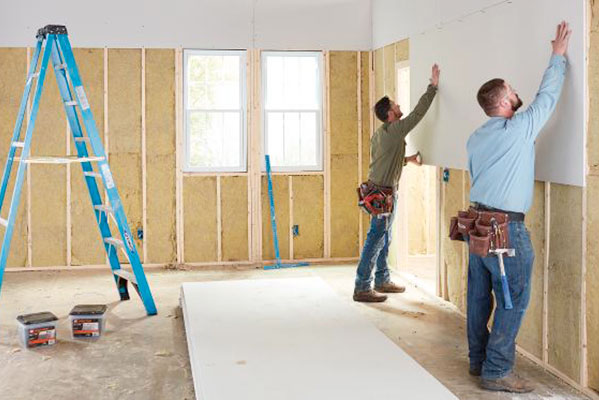Top-Rated Drywall Fort Worth Services for Residential Projects
Top-Rated Drywall Fort Worth Services for Residential Projects
Blog Article
Total Overview to Trustworthy and effective Drywall Setup
Drywall installation is an essential element of any type of construction or improvement job, requiring a careful approach to guarantee both effectiveness and reliability. It is crucial to discover the nuances of each action in the process, as they jointly contribute to the general success of the drywall installation.
Necessary Devices for Drywalling
When starting a drywall installment job, having the right devices is critical for attaining a professional coating. Necessary devices include a drywall knife, tape step, and a T-square, which are essential for exact measurements and smooth cuts. A drywall lift is also highly helpful, particularly for ceiling setups, enabling simpler handling of heavy panels.
For attaching the drywall, a cordless drill and drywall screws are essential. The drill should be equipped with a drywall little bit to ensure effectiveness and accuracy. In addition, a crucial tool is the drywall saw, which helps with cutting about electric outlets and various other challenges.

In addition, safety equipment such as shatterproof glass and a dirt mask are important to make certain personal safety throughout the installation process. Utilizing the right devices not just boosts the top quality of the installation yet additionally enhances the process, making the project much more efficient total.
Preparing the Room

Following, assess the problem of the walls and ceilings. Fix any type of existing damages, such as holes, splits, or peeling paint, to make certain a smooth and also surface area for drywall application. Furthermore, look for electric outlets, pipes lines, and heating and cooling ducts, marking their places to stay clear of issues throughout setup.
It is likewise important to measure the area properly, identifying why not find out more the measurements of the ceilings and wall surfaces to calculate the proper quantity of drywall needed. Produce a thorough plan that consists of the layout and positioning of the drywall panels.
Installment Strategies
Reliable installment techniques are vital for accomplishing a professional coating in drywall projects. Proper measurement and cutting of drywall sheets are fundamental steps.
When hanging drywall, begin with the leading and work downward, guaranteeing that the long edge of the board is perpendicular to the framing. Protect the sheets with screws as opposed to nails, which provide greater holding power and reduce the risk of popping. Location screws every 12 inches along the edges and every 16 inches in the area of the board.
For corners, use corner beads to accomplish sharp, clean edges. When setting up on ceilings, use a drywall lift or have a partner assist in holding the sheets in position (drywall contractor). Keep a void of concerning 1/4 inch over the floor and ceiling to accommodate growth and contraction
Finishing Touches

As soon as the tape is in location, it's time to use the very first coat of joint substance, likewise recognized as mud. Utilize a 10 to 12-inch taping blade to spread the substance evenly over the taped joints, feathering the edges to mix with the surrounding drywall.
Allow the substance to completely dry completely, generally 24-hour. After drying, sand the surface area lightly with fine-grit sandpaper to get rid of any flaws. drywall repair. Repeat the mudding and fining sand process, typically a couple of layers, ensuring each layer is flush and smooth with the drywall surface
Typical Mistakes to Stay Clear Of
Many DIY lovers come across challenges throughout drywall installment that can endanger the final outcomes. One usual blunder is failing to properly measure and reduce drywall sheets.
An additional regular mistake is inappropriate attachment. Using as well few screws or nails can cause loose drywall, while overdriving bolts can create the paper to tear, compromising the framework. It's critical to keep constant spacing, normally every 16 inches, and to make sure that fasteners are flush with the surface.
Furthermore, not addressing moisture concerns prior to setup can lead to mold development and architectural damage. Always evaluate the environment and usage moisture-resistant drywall in high-humidity see this locations.
Conclusion
Trustworthy and reliable drywall setup needs thorough attention to detail throughout the process. Preventing usual mistakes additionally adds to a specialist result, underscoring the importance of accuracy and technique in effective visit site drywall projects.
It is vital to discover the subtleties of each action in the procedure, as they jointly contribute to the overall success of the drywall setup.When getting started on a drywall installation task, having the right devices is vital for achieving a professional finish.For fastening the drywall, a cordless drill and drywall screws are required.Appropriately preparing the area is crucial for an effective drywall installment.Reliable installment strategies are crucial for achieving a professional finish in drywall projects.
Report this page